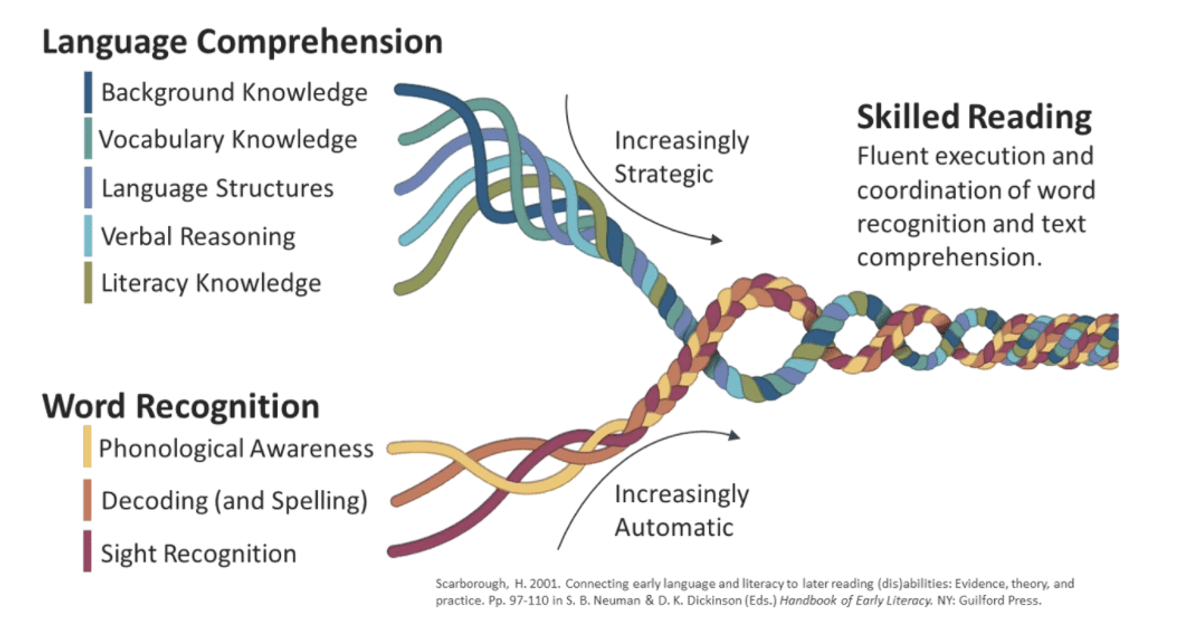Science of Reading (SoR)

The SoR identifies five essential components that make up the Simple View of Reading. Structured Literacy incorporates all five:
- Phonemic Awareness
- Phonics
- Fluency
- Vocabulary
- Comprehension
1. Phonemic awareness: This refers to the ability to manipulate and identify individual sounds (phonemes) in spoken words. This is an important foundation for learning to read and write, as it helps children to understand that spoken words are made up of individual sounds.
2. Phonics: This refers to the relationship between sounds and written letters. Children who are strong in phonics are able to use the sounds of individual letters and letter combinations to decode (sound out) and encode (spell) unfamiliar words.
3. Fluency: This refers to the ability to read smoothly and accurately, with appropriate pacing and expression.
4. Vocabulary: This refers to the knowledge of words and their meanings. A strong vocabulary is important for reading comprehension, as it helps readers to understand the meaning of unfamiliar words.
5. Comprehension: This refers to the ability to understand the meaning of what is being read. Good comprehension involves being able to make connections between new information and prior knowledge and to draw inferences from the text. It is largely dependent on fluency, background knowledge and vocabulary.

